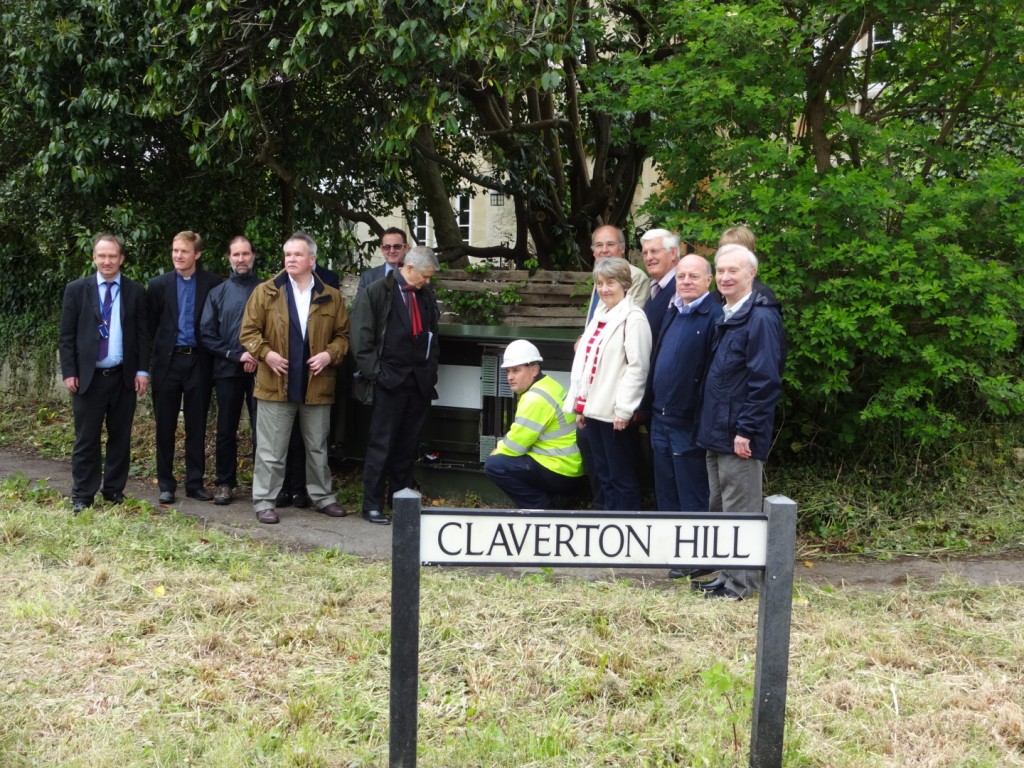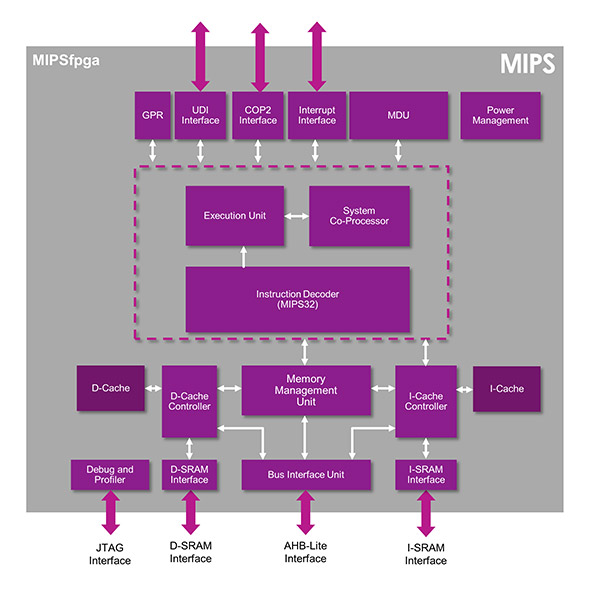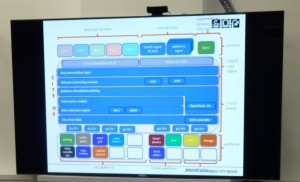Powering a personal wireless network with urine
Researchers at the the Bristol BioEnergy Centre have used miniaturised microbial fuel cells (MFCs) to power a wireless transceiver with urine.
Microbial fuel cells (MFCs) replicate biological processes to generate energy, and researchers at UWE in Bristol have embedded the technology in a pair of socks. The key is that the MFC takes in urine and produces enough energy to power a wireless transceiver, creating a personal area network (PAN) link without having to use batteries. This is the first self-sufficient system powered by a wearable energy generator based on microbial fuel cell technology and the research paper, ‘Self-sufficient Wireless Transmitter Powered by Foot-pumped Urine Operating Wearable MFC’, is published in Bioinspiration and Biomimetics.
The paper describes a lab-based experiment led by Professor Ioannis Ieropoulos, of the Bristol BioEnergy Centre at the University of the West of England. The Bristol BioEnergy Centre is based in Bristol Robotics Laboratory, a collaborative partnership between UWE and the University of Bristol.
 |
| Researchers at UWE have developed socks that convert urine into energy to
power a wireless transceiver for a personal area network without batteries |
Soft MFCs embedded within a pair of socks was supplied with fresh urine, circulated by the human operator walking. Normally, continuous-flow MFCs would rely on a mains powered pump to circulate the urine over the microbial fuel cells, but this experiment relied solely on human activity, which is a key step forward (pun intended). The manual pump was based on a simple fish circulatory system and the action of walking caused the urine to pass over the MFCs and generate energy. Soft tubes, placed under the heels, ensured frequent fluid push–pull by walking. The wearable MFC system successfully ran a wireless transmission board, which was able to send a message every two minutes to the PC-controlled receiver module.
“Having already powered a mobile phone with MFCs using urine as fuel, we wanted to see if we could replicate this success in wearable technology. We also wanted the system to be entirely self-sufficient, running only on human power – using urine as fuel and the action of the foot as the pump,” said Professor Ieropoulos. “This opens up possibilities of using waste for powering portable and wearable electronics. For example, recent research shows it should be possible to develop a system based on wearable MFC technology to transmit a person’s coordinates in an emergency situation. At the same time this would indicate proof of life since the device will only work if the operator‘s urine fuels the MFCs.”
The challenge now is how the MFC cells are refuelled with urine.
Microbial fuel cells (MFCs) use bacteria to generate electricity from waste fluids. They tap into the biochemical energy used for microbial growth and convert it directly into electricity. This technology can use any form of organic waste and turn it into useful energy without relying on fossil fuels, making this a valuable green technology. Parts of this work were funded by the UK Engineering & Physical Sciences Research Council (EPSRC) and the Bill & Melinda Gates Foundation.
The research is important in other areas of robotics as it would allow autonomous systems to generate power from waste materials to operate for days or even months at a time.
EnSilica sets up design centre in Bristol
Leading UK chip designer EnSilica has set up a new regional office and design centre in Bristol (UK) to be its centre of excellence for analogue design.
The office and design centre will be headed by Nick Weiner, EnSilica’s Director of Analog and Mixed-Signal Design who joined the company earlier in 2015. Well known within the industry as a founder of Bristol companies Phyworks (sold to Maxim in 2010) and Xintronix (sold to FTDI in 2013), Nick has many years of experience in analogue and mixed-signal IC design management and business development. Nick has specialist knowledge in products developed for the fibre-optic communications, including industry-leading FTTH transceivers, 10Gbps transceivers and signal integrity ICs. He will lead the company’s team of Bristol-based design engineers and project support staff.
“The opening of our regional office and design centre in Bristol (UK) is a further strategic step in the ongoing development of our semiconductor design and supply business,” said Ian Lankshear, CEO of EnSilica. “Not only will it bring us closer to customers in the area but it will also further extend our existing turnkey ASIC, FPGA and embedded design capabilities, providing us with a more flexible and scalable analogue and mixed-signal IC design resource for customer projects that require larger teams to accelerate timescales and deal with increasingly complex projects.”
The Bristol office will also support local silicoon comapnies using EnSilica’s IP designs and complements its existing headquarters facility in Wokingham and verification centre of excellence and design centre in Bangalore, India.
Moortec Semiconductor in Plymouth is recruiting
Analogue and mixed-signal IC design company Moortech in Plymouth is looking for a Senior Analogue IC Layout Engineer with a proven track record and a Degree (or equivalent qualification) in Maths, Science or Electronics.
They are also recruiting for a Senior Analogue IC Designer with a Degree or equivalent in Maths, Science, or Electronics.
October Newsletter out now
Banksy’s Dismaland exhibition drew global attention to the SouthWest and the tech cluster here, and local tech CEO Rupert Baines draws some key lessons from the event of the summer on page 14 of the latest High Tech Sector Group newsletter.
This comes as Bristol and Bath continues to cement its position as a leading tech cluster in Europe, from the new Cray supercomputer research lab (p2) to recent smart city project wins and a significant bid in the pipeline (p2). The region has a real opportunity to develop the next generation of hardware and software technology for smart living (page 3) both in Europe and around the world. This is boosted by the latest smart home research centre at the Bristol Robotics Lab (page 9) using networking technology from local startup ContinuumBridge. Blu Wireless Technology is also seeing its technology being adopted in multiple projects across Europe (p6).
Quantum technologies continue to be a strong force in the region, with a new deal with Oxford Instruments, another local company, and researchers heading over to see the latest quantum computing technology from D-Wave in the US.
We welcome back the TEDx Bristol conference next month, and are delighted to see the BrisTech developers conference added to the array of technical conferences in the region such as Intelligent Test (page 13). There is also increasing interest in various coding schemes around the city and a need for mentors and volunteers, from Digimakers <local> and Code Clubs (page 12), and GeekGirls are looking at how all this fits together (page 14)
Sign up and download the October newsletter here
High Tech June newsletter out now
The June newsletter for the High Tech Sector group is out now.With a preview of the VentureFest event at the Engineshed on 9th June, the latest in music technology being developed in the region and how the changing landscape of the global electronics industry is changing, there is 16 pages of activity and innovation in the region.
You can download the newsletter here and sign up for regular copies here along with previous newsletters.
Money talks for high speed broadband (but not how you might think)
A tiny village outside Bath has become the first in the country to have high speed fibre broadband installed from scratch.
The village of Claverton has just 70 houses and no broadband infrastructure, so it was not on the list for broadband access, despite being in a valley just a few miles outside Bath and almost next door to the city’s world class university. One of the reasons for this is the financial modelling used by infrastructure provider Openreach, which assumes a 20% takeup of services. The cost of installing fibre across 4km to reach the village for just a few houses was uneconomic.
The residents of the village didn’t take no for an answer, and as this included several technology and telecoms executives and lecturers from the nearby University of Bath they investigated many different options over the last few years, including a mesh network over the hill to a connection point. Two years ago they started negotiations with Openreach, and part of this was to change the financial model. To do this, the village has partly funded the installation. All the houses in the village were part of the scheme, on the basis of paying what they could afford. Several home-based businesses contributed more, but access was not dependent on the contributions. Instead, this demonstrated to Openreach and service provider BT that the demand for the service was much higher than the expected 20% and as a result reduced the amount the village contributed. However, there was a clear argument that having high speed fibre broadband increased the value of their homes, and so far the uptake is 40% and rising.
Twelve fibres were installed on the aerial route alongside the copper phone cable, connecting to a new box in the village with Huawei’s termination equipment. Just one fibre is lit for broadband, and as this is shared between just 70 homes rather than the usual 200 to 300 there will not be a problem with contention. This also leaves the village well placed for the next generation G.fast rollout of speeds of 400 to 500Mbit/s in 2016 and 2017.
“We realised the high costs involved meant Claverton would not be upgraded as part of BT’s normal commercial fibre broadband roll-out for some time, so we set about working with the company to jointly solve the problem,” said Dr Rodger Sykes, chairman of software startup Thalia. “It has been hard work over three years to get to where we are today both for the residents of Claverton and the BT people involved, but we have worked together very well. Claverton residents really appreciate the benefits superfast broadband can bring and are excited at the thought that this project provides everyone in the community with the kind of speeds we could only dream about having in the past. It is significant that almost every Claverton household has made a contribution to the village’s superfast broadband fund. Because of the distance the village is from the local telephone exchange and a roadside cabinet, most residents were previously getting download speeds of less than 1.5 megabits per second (Mbps), but now our internet experience has been transformed.”
BT also invested in the project alongside Openreach. “The people of Claverton are true national trail-blazers and are setting the pace for rural communities through their collaboration with BT,” said Bill Murphy, managing director of next generation access for BT, who was at the village for the launch of the service “Elsewhere, we’re working in partnership with local authorities and communities to make high-speed broadband available in the more challenging areas of the UK. There are many examples of us doing so, but this is the first village to work with us on creating an entirely new broadband network for the local community. Given the focus on delivering superfast broadband in this region, it is no wonder the Organisation for Economic Co-Operation and Development (OECD) Wellbeing report last year listed the South West as best UK region for household broadband access.”
Related articles
Meet the man with millions to invest in the SouthWest
A very interesting interview with Paul Oldham, Bristol-based regional director of the Business Growth Fund which is funded by the high street banks but independently run.
Some of its key investments have been in tech in the South West such as Corsham-based cloud IT services provider Skyscape (£4 million) and microwave smart antenna designer Sub 10 Systems (£2.5 million) in Newton Abbot. Although Sub 10 merged with Californian Fastback Networks in March this year, the fund has kept its investment in the combined venture. The new HQ will be in California and the Sub 10 site will be the new European headquarters.
Fastback merges with Sub 10 Systems
Source: Biginterview:MeetthemanwithmillionstoinvestintheSouthWest’sgrowingmid-sizedbusinessesBlog
BCS App-a-thon – Guinness World Records Challenge
BCSWomen, part of the British Computer Society, will be attempting to break the Guinness World Record for the largest number of people learning to write Android smartphone applications at the same time on Saturday June 13th from 10.30am. They are getting together with various universities, organisations, companies and local BCS branches to get as many people as possible coding an app.
BCS App-a-thon – Guinness World Records Challenge
Imagination opens up its MIPS architecture to universities
Imagination Technologies, which has two design centres in the SouthWest region, is opening up its MIPS architecture to universities with the RTL implementation of a simplified microAptiv design.
MIPSfpga gives universities around the globe free and open access to a fully-validated, current generation MIPS CPU in a complete teaching package that can be run in a low cost FPGA. The core is already popular in the PIC32MZ microcontroller from Microchip Technology but access to the detailed RTL – the code that implements the core – can be tremendously helpful for teaching.
CPU architecture is generally taught as part of electronic engineering, computer science and computer engineering courses. Until now, what’s been missing from all of these courses is access to real, un-obfuscated RTL code that will enable professors and students to study and explore a real CPU. RTL code is often hidden, or obfuscated, to prevent it being copied and used in other designs without paying royalties or license fees to the original developer.
The MIPS architecture was originally developed at Stanford University in the early 1980s. It has been the teaching architecture of choice for decades because of its elegant true RISC design, epitomized by Dr. David A. Patterson and Dr. John L. Hennessy in their book, ‘Computer Organization and Design’, now in its fifth edition.
The MIPS CPU is being offered as part of a complete free-to-download package for universities, together with a Getting Started Guide, teaching guide for professors, and examples designed to enable students to see how the CPU works and explore its capabilities. With the materials, students can develop a CPU and take it through debug, running on an FPGA platform.
This MIPS CPU configuration is designed to run on a low-cost FPGA platform, with guides available for the Digilent Nexys4 platform with a Xilinx Artix-7 FPGA, and the Terasic DE2 platform with an Altera Cyclone FPGA.
MIPSfpga is already running in several academic institutions including Harvey Mudd College, Imperial College London, University College London (UCL), and the University of Nevada, Las Vegas (UNLV).
The MIPSfpga CPU and related materials are available for download from the Imagination University Programme website now for first phase users via an application process. Academics can register at http://community.imgtec.com/university.
Phase two, starting in June, will require only a simple click-through agreement. Additional teaching materials are being developed and will be made available later this year.
However, the programme is not entirely open source. For academic users the license is simple: you can use it as you wish, but you cannot put it into silicon. If you modify it, you must talk to Imagination first if you wish to patent the changes. In summary, universities can go as deep as they like under the hood to explore how today’s complex CPUs are built.
Related articles
Headline speakers for Venturefest announced
Venturefest has announced the headline speakers for the event on 9th June, with Col Needham, founder and CEO of the Internet Movie Database (IMDb) and Scott Wilcox, the Director of Technology for SXSW Eco.
Col and Scott will be part of a Thought Leadership Conference at Venturefest in the Passenger Shed at Bristol Temple Meads which will highlight the latest developments on key issues affecting innovators and investors.
Col Needham founded IMDb 25 years ago in Bristol before it was acquired by Amazon in 1998. He continues to serve as the founder and CEO of IMDb and is now a key figure in the global film industry.
Scott Wilcox, who has firmly established South by South West Eco as the international conference on the future of sustainability, will be presenting his insights into the latest US and international green technology developments and outlining the opportunities for entrepreneurs in the region. This is a key part of Bristol’s role as the Green Capital of Europe this year.
For further information visit our Venturefest website or follow on twitter @venturefestbb
Rolls Royce transition shows power of high tech

Former ARM CEO Warren East takes over at Rolls Royce in July
The appointment of Warren East, former chief executive of chip designer ARM, to head up Rolls Royce demonstrates a key shift in the importance of the high tech industries.
The successor to John Rishton, CEO from 2011 to 2015, came from an extensive international search and shows the importance of microelectronics and embedded software to Rolls Royce which has a large aerospace base in Bristol. The company doesn’t really sell engines, even though it has a £73bn order book for them – it leases many of them and sells ‘time in the air’ instead. This has meant an increasing reliance on monitoring the engines with sensor technologies, security and global software management. All this maps directly onto the skill set of executives like Warren East. As CEO of ARM Holdings from 2001 to 2013 he helped ARM become one of the world’s leading developers of semiconductors with an outstanding record of innovation and a strong commitment to R&D.
Ian Davis, Chairman of Rolls-Royce, said: “I am very pleased that Warren East will become the new Chief Executive of Rolls-Royce following John Rishton’s retirement. Warren has an outstanding record as CEO of ARM Holdings. He is an engineer by training; he has a deep understanding of technology and of developing long-term partnerships. He has proven strategic and leadership skills in a global business and a strong record of value creation.
Warren East said: “I am delighted to be appointed as Chief Executive of Rolls-Royce. It is well positioned in growth markets, with world class engineering skills and a proud record of innovation and delivery. I have a strong desire to return to an executive position with the energy and enthusiasm a role like this demands. The markets which Rolls-Royce serves and the technology it deploys are fascinating. ”
As well as being a Non-Executive Director of Rolls-Royce, Warren East serves as a Non-Executive Director on the Boards of BT, De La Rue, local engineering company Dyson, US memory chip maker Micron and the UK’s Digital Catapult. His intention is to stand down from all but one of his current roles as a Non-Executive Director, in line with Rolls-Royce company policy.
Rolls Royce employs over 54,000 people in more than 50 countries, with over 15,500 of these being engineers. It also has a Land & Sea division for Marine, Nuclear and Power Systems, where projects such as unmanned, autonomous ships are being developed. In 2014, Rolls-Royce invested £1.2 billion on research and development and supports a global network of 31 University Technology Centres. There are over 1,000 Rolls-Royce STEM (Science, Technology, Engineering and Maths) ambassadors who are actively involved in education programmes and activities, and the company has a target to reach 6 million people through its STEM outreach activities by 2020.
East will be paid £925,000 with share incentives up to £1.6m. While at ARM he had a salary of £500,000 but is reported to have left ARM with 450,000 shares worth £4 million from the group’s long-term incentive plan and deferred annual bonus plan.
Related articles
FreeRTOS moves onto Tensilica processors for wearables and IoT
One of the world’s most popular real time operating systems is developed and supported in Bristol and has now been ported to a highly configurable high performance processor for applications in wearable designs and the internet of things (IoT).
FreeRTOS is a popular, scalable, easy-to-use real-time kernel designed specifically for small, low-power embedded systems. According to a 2013 market share study from UBM Tech, FreeRTOS had been selected for 13 percent of embedded projects that utilize an embedded operating system (OS), and is a very popular option for microcontrollers as well as smaller 32-bit processor cores. It has now been ported onto the Tensilica family of configurable processors from Cadence Design Systems. The Tensilica cores are configured from a software tool so they are optimised for a particular application with no wasted resources and can be easily integrated into a System-on-Chip design. The tool also generates the software development environment for the particular core.
“The availability of FreeRTOS on Tensilica processors and DSPs means that Cadence customers now have the option to join the many developers worldwide who already benefit from the ease of use and bullet-proof reliability of FreeRTOS. We look forward to welcoming Tensilica users to our global community,” said Richard Barry, FreeRTOS developer and principal engineer of Real Time Engineers Ltd. FreeRTOS makes it easier for programmers to develop complex real-time software that combines control and DSP threads, and FreeRTOS has specific support for Internet of Things (IoT) applications that helps customers get to market faster. Tensilica processors and DSPs are ideal for wearables and other IoT applications that combine wireless digital signal processing with control. By combining digital signal processing and control, designers can develop lower power, more efficient chips.
UltraSoC taps region for new chief exec
UltraSoC, the Cambridge-based developer of advanced debugging and analytic technology for embedded systems, has appointed Rupert Baines as its new CEO.
Baines, a Bath-based 30-year veteran of the global semiconductor and communications industries, has previously held senior roles in both start-ups and prominent trans-national companies. Most recently he was VP of Strategic Marketing at Mindspeed in Bath following that company’s acquisition of Picochip (now part of Intel), where he had served as VP of Marketing. His CV also includes spells at first:telecom (acquired by Atlantic Telecom for $818 million), Arthur D Little and Analog Devices, where he played a key role in the development and mass-market adoption of digital subscriber line (DSL).
“UltraSoC has a great team and game-changing technology,” said Baines. “We’re not only empowering designers to create better products ‘first-up’, more quickly and easily – we’re also giving them the opportunity to use connectedness and analytics to refine the performance and features of those products when they’re actually in use. This really has never been possible before.”
UltraSoC’s core offering embeds debug and analysis capabilities into the silicon chips that are used in today’s electronic products. This allows chip designers to design and debug their devices more quickly, and to offer their customers innovative features such as in-service power consumption optimization, self-testing and failure detection.
“Rupert has an outstanding track record of success in leadership and category definition in technology markets,” said Chris Gilbert, Chairman of the UltraSoC board and formerly CEO of Swindon-based Ubiquisys, acquired in 2013 by Cisco in a $310m trade sale. “We believe his passion and ability to translate great technology into real-world impact are exactly what’s needed to take UltraSoC to the next level of success.”
UltraSoC’s VC investors include Octopus Investments, whose Ventures team has helped build global businesses such as Zoopla Property Group, Secret Escapes, SwiftKey, graze.com and YPlan.
Bristol to be world’s first programmable smart city
Filed under: News
The Bristol is Open programme is aiming to be the world’s first programmable city by opening up a scalable software defined network (SDN) operating system to researchers and companies.
The netOS operating system developed by the High Performance Computing group at the University of Bristol runs on the BlueCrystal supercomputer at the University and controls a network of 144 fibres across the city of Bristol, giving terabit/s of bandwidth. The key to the programme is that the network can be divided up into separate virtual ‘slices’ so that many applications can all run independently. This will allow individual applications from 100Mbit/s up to 100Gbit/s to be tested out, something which hasn’t been possible up until now, says Prof Dimitira Simeonidou, head of the research group and chief technology officer of Bristol is Open. All of this is combined into the CityOS and makes it fundamentally different to other smart cities such as Barcelona.
The network currently has four nodes connecting the University, the EngineShed business acceleration centre, the Watershed digital creative incubator and the @Bristol science centre. This will allow startups to use the network to develop new smart city hardware and applications. It will also allow the Planetarium at @Bristol to be used to display immersive 3D Ultra HD video over the network coupled with data from BlueCrystal.
Part of the aim is to be able to research future generations of technologies needed for mobile wireless, says . “We are researching 5G at the moment but this has to be able to support 10Gbit/s speeds for when 10G wireless comes along,” she said. Elements of this are already happening with Blu Wireless Technology using its 60GHz gigabit wireless technology to connect to the network.
The optical switches are coming from Polatis and BiO has signed a memorandum of understanding with NEC for more network equipment. It is also working with Silver Spring to install a mesh network using the WiSUN protocol on lampposts across the city to collect data. Bristol City Council will also make data from the city available as part of the programme.
The other key aspect is the ability to emulate, rather than simulate, other cities with many more nodes. The emulator is based on Xilinx FPGA cards and allows the network topology of other larger cities to be run on the BiO infrastructure. This would allow cities such as New York or Hong Kong to test out new topologies and applications for 1000 or 1500 nodes, using real infrastructure and real data, without impacting on the running of a megacity. And because the Bristol network is connected to high bandwidth academic networks such as SuperJANET, real data can be used to test out the emulation in real time. Bristol’s sister city of Guangzhou in China is already interested in using this capability.
Related articles
Blu Wireless shows its gigabit wireless modem chip technology
Blu Wireless Technology has been demonstrating its HYDRA gigabit modem technology in a chip at the Mobile World Congress trade show in Barcelona (see video below).
The baseband system IP for 60GHz wireless has been implemented in a 40nm CMOS chip that can be used for the ‘WiGig’ 802.11ad 60GHz version of wifi that is starting to get traction in laptops and talets. It can also be used for wireless Back Haul for LTE mobile networks and for other high speed networks such as Bristol is Open which formally launches tomorrow (as detailed in the January High Tech newsletter). Bristol startup BWT supplies a complete multi-Gigabit capable baseband processor with all the associated firmware so that customers can quickly build their own millimetre wave gigabit wireless modem chips.
“The successful validation and demonstration of our HYDRA Gigabit System IP represents a major milestone in Blu Wireless’s technology roadmap,” said Henry Nurser, Blu Wireless Technology CEO. “Customers looking to license HYDRA for their own millimetre wave products can now be confident in going to market with this class leading technology.”
HYDRA, developed in Bristol, is based on a unique and patented architecture, which combines software defined parallel processing functions. These are controlled using a MIPS microAptiv CPU with hardware accelerators for fixed communication functions. This allows customers to adapt and add value to wireless modem applications with unique algorithms for channel equalisation, modulation or beamforming – all programmable through the robust, industry standard software tools provided by Imagination Technologies for its MIPS CPUs. Imagination has two design centres in the region.
This collaboration with Imagination is vital, says Nurser to get the maximum performance and efficiency from the multiple MIPS CPUs in the design. “Blu Wireless has made excellent progress with their innovative HYDRA IP implementation on 40nm,” said Tony King-Smith, EVP of marketing at Imagination Technologies. “We’re impressed with the performance they have achieved, thanks in part to MIPS’ high-performance, power-efficient architecture for multi-core embedded designs, and our comprehensive MIPS tools. ”
Since late 2014 the lead HYDRA chip has been integrated with a 60 GHz phased array radio front-end to create Blu Wireless’s Lightning evaluation and development platform which are available now as well. The module integrates a full ‘OpenFlow’ SDN client which supports wireless mesh networking. It is currently being deployed as part of Bristol is Open to demonstrate gigabit rate wireless mesh networking for dynamic data backhaul applications.
The ‘Lightning’ module is integrated into a robust mechanical housing for deployment in outdoor applications and is available with a mounting kit for lamppost deployment.
Mark Barrett, CMO at Blu Wireless said: “The ‘Lightning’ module represents a total system solution for the next generation of flexible gigabit capable backhaul technologies. The unique combination of low profile 60 GHz phased array technology, gigabit modem and adaptive mesh networking using SDN ‘Openflow’ techniques will deliver lower TCO and scalable data delivery capabilities to service the increased data demand of mobile networks”
www.bluwirelesstechnology.com/
Related articles
Somnium uses TVS for pre-launch testing
Bristol design tool startup Somnium Technologies is using the local expertise of TVS to test out its technology before its launch.
Somnium has developed a new way of developing embedded code to make the process much more reliable and bug free, and TVS performed important installation testing of Somnium DRT. This uses a patented resequencing technology to automatically optimise embedded software, resulting in smaller, faster executables. Before DRT’s general availability release, Somnium wanted to be confident of the best out of the box experience for its customers, who use a wide variety of host platforms, so it contacted TVS for its proven experience in this field.
“Installation is the first step in the user experience, and it is often under-tested in real-user scenarios,” said Dave Edwards, Founder and CEO/CTO of Somnium Technologies. “We felt it was best practise to bring in a level of independence and we naturally turned to TVS because of its expertise in this area.”
Jamie Packer, VP of Customer Engineering at Somnium added: “We already perform extensive automated testing of functionality and standards compliance using several test suites. However, it is impossible to automate the experience of new users with different expectations and a variety of hardware and software configurations. The testing performed by TVS was extremely useful and thorough. TVS tried a number of interesting corner cases. This has led to improvements in both the installation process and the documentation.”
“SOMNIUM is very proactive in recognising the importance of independent installation testing. Many companies overlook this aspect, and hence many new users report a negative experience when starting with a new tool,” said Mike Bartley, Founder and CEO of TVS.
Related articles
BDO re-launches South West manufacturing forum | Blog
The first event under the new partnership will focus on sustainability and take place on March 11th at the Gloucestershire offices of global engineering giant Renishaw. Attendees will be welcomed by Gareth Hankins, the company’s Manufacturing Director, and hear about ‘Sustainability the Renishaw approach’ before a Q&A session and a site tour to finish.
via BDO re-launches South West manufacturing forum | Blog.
South West tech firms benefit from £47 million Regional Growth Fund
Tech firms across the South West have benefited from the latest £47m round of the government’s Regional Growth Fun
LED developer and manufacturer Plessey Semiconductors in Plymouth and Swindon, specialist automotive test equipment maker Anthony Best Dynamics Ltd in Bradford on Avon, chip designer Cambridge Silicon Radio in Bristol and test systems maker Spirent Communications in Paignton have all received backing from round 6 of the fund. Avanti Communications Group in Penzance and Hymec Aerospace (UK) in Plymouth are also beneficiaries
Arduino team at Exeter in international tech final
A TEAM of Exeter University students have reached the final four of an international competition to showcase technological innovation.
The Computer Science undergraduates devised a ground-breaking home security system which allows doors to be locked and unlocked via a normal mobile phone. The four-strong team of Matthew Gilbert, Joshua Holmes, George Young and Ashleigh Udoh were one of around 20 university teams from across the UK and the US to enter the Project Arduino competition organised by Thales, a leading engineering and technology company.
Team Lockduino are now facing the University of Reading in the UK, and Caltech and the University of California, Irvine, both in the US, in the final showdown. They face a public online vote at http://www.thalesarduino.com to decide who will be the overall winner. Voting closes on Monday, February 23 at 5pm UK
via Mobile app holds key to success for Exeter students (From Mid Devon Star).
Related articles
Could web-based taxi business Uber be about to drive into Bristol?
US startup of the year Uber has submitted an application to Bristol City Council’s licensing department to operate a taxi-like service in the city.
Uber, founded in San Francisco in 2009 and now valued at $40bn, uses an app on a smart phone with an agreed scale of charges. It doesn’t use taxis but ‘ride shares’, although minicab drivers can be Uber drivers.
Using a smart phone allows drivers to see their fares’ exact location using the in-built GPS and users to see the nearest available cars to their location and for them to trace the journey of their cab on an interactive map as they wait for its arrival.
The company already operates in hundreds of cities across the globe, including London and Manchester in the UK, and is focussing on a huge expansion in Europe which it claims could create 50,000 new jobs.
But the company has caused controversy – and has even been banned in some countries.
via Could web-based taxi business Uber be about to drive down Bristol fares?.




































